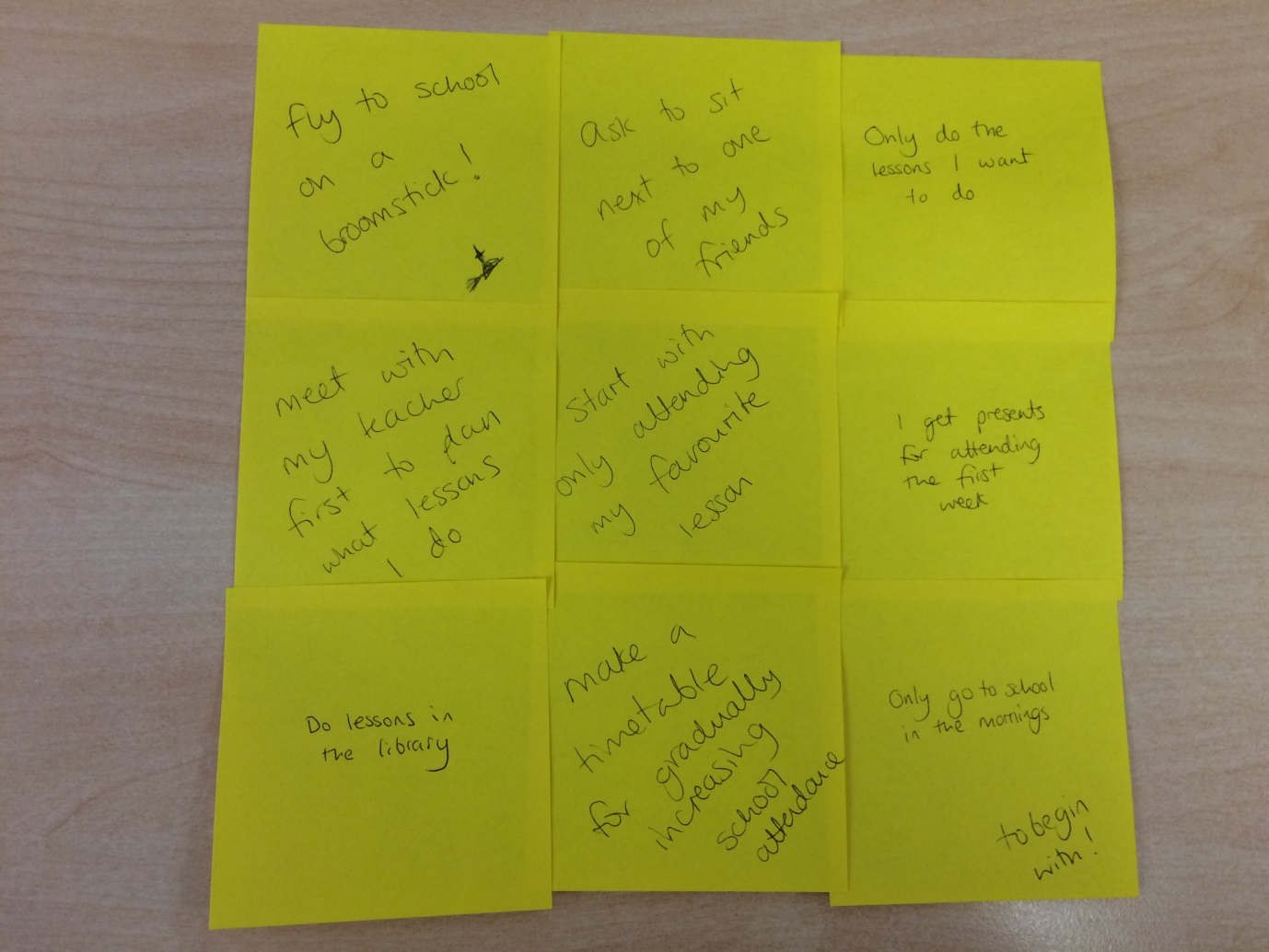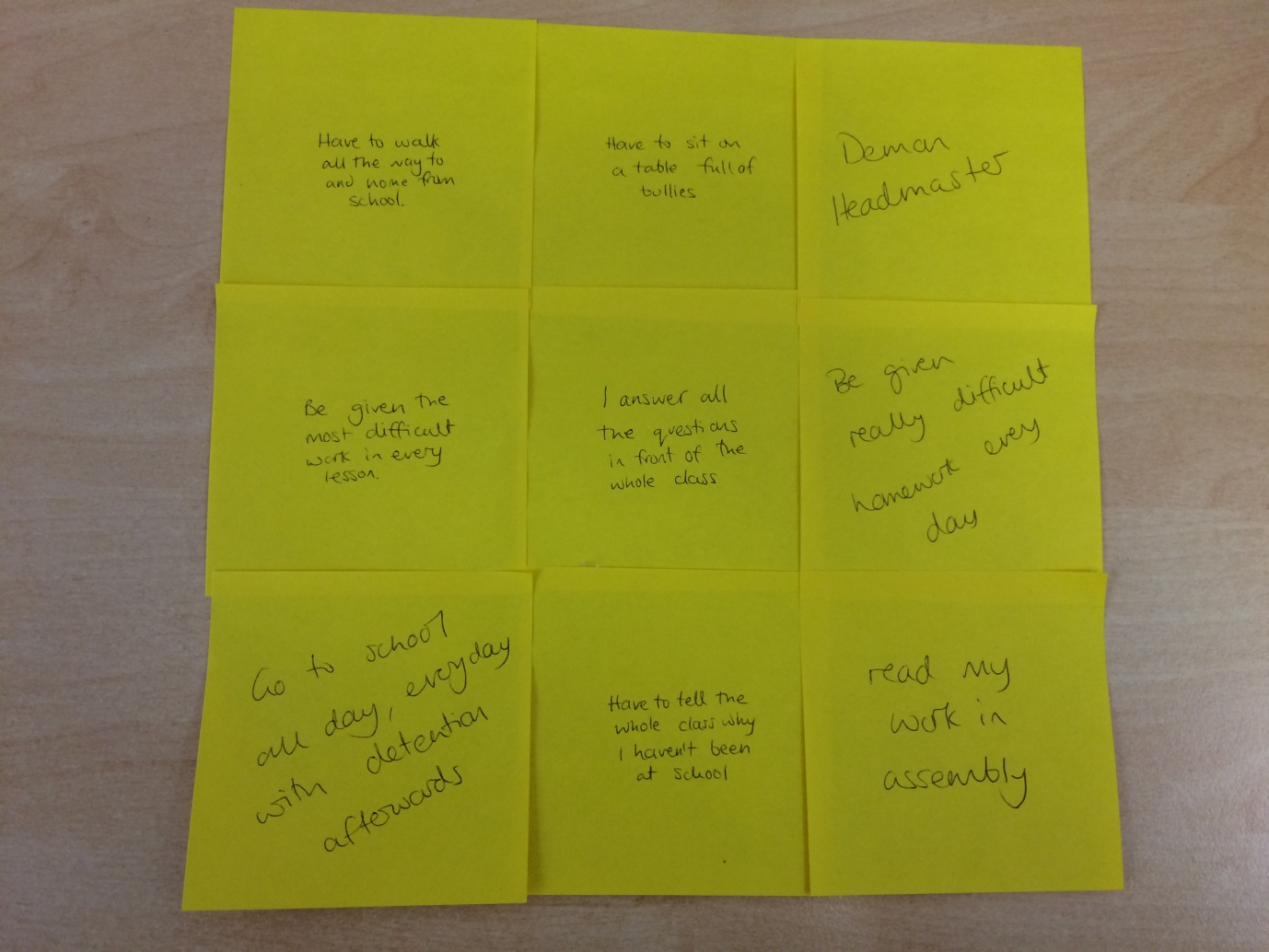A part of my role within CAMHS (Child and Adolescent Mental Health Services) is to meet with young people to discuss their care and to work with them to make treatment plans. I am there for them to think through their worries and often act as an advocate for the young person in meetings. I also have to be the bearer of bad news, for example, “you’re not allowed to go to the park because you haven’t eaten enough today”. This can put a strain on the therapeutic relationship. On one of these occasions I was finding it particularly difficult to make plans or even start a conversation with a young person and was repeatedly getting responses such as “I don’t want to talk about it” or “I told you I don’t want to do….. but you’ll just say I have to do it anyway!”. A colleague suggested I try the 3×3 technique from the Me first resource hub. I decided to adapt this from the original idea to suit this particular situation and here’s how it went….
Beforehand :
I was feeling quite doubtful that it would work, anticipating the young person would just reject the idea and walk out the room. I took in different coloured paper and some scissors and said “I thought we’d try something different today just for some fun”.
The process:
- I explained that we’d be picking a topic/scenario and think of the very best ideas of what could happen and the very worst ideas. I emphasised that we could have fun with it and come up with completely crazy ideas that didn’t have to make sense and that we could choose anything. I gave an example: “A great idea for school could be to fly there on a broomstick! A terrible thing could be if you had a demon headmaster”.
- From a selection of coloured paper I asked them to choose their favourite and least favourite colour and we cut them into 9 pieces.
- We both came up with 3 best ideas and 3 worst ideas and wrote them down. We then continued to come up with a further three until our ideas ran out.
- As a further step we realised that it brought up a lot of questions and so we cut out speech bubble shapes and wrote on them and I agreed to take them to her team to discuss.


This may seem like a really simple idea, and it is! But the outcome was way more successful than I could have imagined. I got a better insight into the young person’s anxieties and it opened up a lot more conversations.
Thoughts on this process….
- This was really easy to do, no preparation was required and the young person found it fun coming up with silly ideas so was more engaged.
- Notice I didn’t use “good” or “bad” when describing ideas as it implies right and wrong. An anorexic patient may come up with a “best idea” of never having to eat again, that’s ok, you just might not pursue that one further!
- It’s important to be flexible- At first the young person wanted to draw a picture so I let them but continued to talk and I wrote down both our ideas. They were also reluctant to talk about the things we needed to so we started on a subject of their choice and used it as a practice run as shown below:
Example- Practice run:
How can I get more chocolate?
Best ideas– Write to Willy Wonka and ask for some, make your own, get rich and buy lots, ask mum if I can have an allowance to go and buy some.
Worst ideas- eat cheese instead, take my brothers, ask a cow, rob a sweet shop.
Example- Real run:
I hate my medication and don’t want to take it!
Best ideas– never have to take it again, take it with a ton of chocolate, be given it by my favourite celebrity, take it while watching tv.
Worst ideas- take it ten times a day, drink it with poison, have it as an injection.
- I was surprised that the young person was the first to come up with sensible ideas. I think my ridiculous ones (“eating chocolate at every meal”) made it easier for them to share their ideas/wishes without feeling judged.
- We went over 3 ideas! I thought it would be difficult to come up with enough ideas but once we’d got into it we kept going and the ideas became more focused on their worries.
- I found the further step of having “question bubbles” really useful in helping me to remember things they brought up and would want to follow up on. It also gave them a sense of their worries being taken seriously.
Charlotte Dixon, Therapeutic Care Worker, CAMHS & Me first Communication Champion
If you’d like any further information about the 3×3 Technique, please see the details for this resource here. If you’d like more ideas for communicating with children and young people, check out the Me first resource hub here and for more information about Me first have a look at their website.
